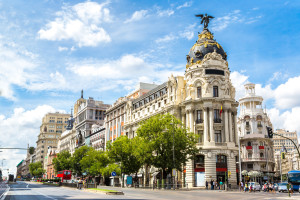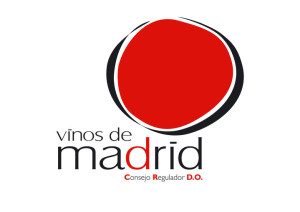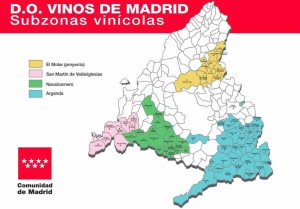Madrid is a beautiful city, known for world-class dining amazing scenery, and beautiful architecture. If you visit, you’ll want to take in the Prado Museum as well as the Museo Reina Sofia, Retiro Park, the Gran Via, and the Palacio Real (just to get you started).
Madrid is also the name given to one of the seventeen autónomias (autonomous communities) of Spain. The autónomia of Madrid is located somewhat in the middle of the country, bordering Castilla–La Mancha and Castilla y León. The city of Madrid is the capital city of the area and—with a population of over 3 million people—by far the largest.
The autónomia of Madrid is also a wine-producing area, and has its own geographical indication: Vinos de Madrid Denominación de Origen (DO). The Vinos de Madrid produces a wide range of wines, including tinto (red), blanco (white), and rosado (rosé). The main authorized grape varieties for these wines are as follows:
- Red and rosé: Tinto Fino (Tempranillo), Garnacha Tinta (Grenache Noir), Merlot, Cabernet Sauvignon, or Syrah
- White: Malvar, Albillo (Albillo Real), Airén, Viura (Macabeo), Torrontés, Parellada, Moscatel de Grano Menudo (Muscat Blanc à Petits Grains)
Traditional Method sparkling wines—known as Vino Espumoso—are produced as well. Vino Espumoso de Madrid is required to be aged on the lees for a minimum of 9 months; however, the only producer in the region—Bodegas Jesús Díaz e Hijos—ages their bubbly sur lie for at least three years. The grapes allowed in the sparkling wines of Vinos de Madrid DO include the following Albillo (Albillo Real), Torrontés, Viura (Macabeo), Parellada, Malvar, Garnacha Tinta (Grenache Noir) and Tinto Fino (Tempranillo).
The DO is also approved for the production of a unique wine known as Vino Sobremadre. Vino Sobremadre is produced in both red and white styles, and involves a post-fermentation maceration of 90 to 180 days on the grape skins and lees (the madre).
The Vinos de Madrid DO was first established in 1990. Soon thereafter, three sub-regions— Arganda, Navalcarnero, and San Martín de Valdeiglesias—were approved. On March 20, 2019, the Consejo Regulador announced a new sub-region to be known as El Molar.
The new sub-region of El Molar is the only one located in the north of the Vinos de Madrid region, and currently has approximately 600 hectares (1,500 acres) planted to vine (mainly Granacha Tinta and Malvar). The El Molar region stretches between the River Guadalix and the River Jarama, stretching into the Sierra Norte de Madrid Mountains (part of the Sierra de Guadarrama Range) and the Jarama Valley. Wineries in this area are located just to the north of the city of Madrid—and close enough for a day trip. If you leave by 5 pm, you can be back in the city for dinner at the Mercado de San Miguel.
References/for more information:
- https://www.elconfidencial.com/espana/madrid/2018-03-02/vinos-madrid-demoninacion-origen-molar-sierra-norte_1528999/
- http://www.vinosdemadrid.es/es/
- http://www.elmolar.org/noticias/lanuevacuartasubzonaelmolaryaesunarealidad/?utm_source=dlvr.it&utm_medium=twitter
- http://www.sieteestrellas.es/index.php/item/1703-denominacion-de-origen-vinos-de-madrid-llega-a-el-molar
- https://elcorreodepozuelo.com/2019/03/21/la-denominacion-de-origen-vinos-de-madrid-se-amplia-por-primera-vez-con-una-cuarta-subzona-en-el-molar-a-la-que-se-incorporan-11-municipios-mas/
Post authored by Jane A. Nickles, your blog administrator


